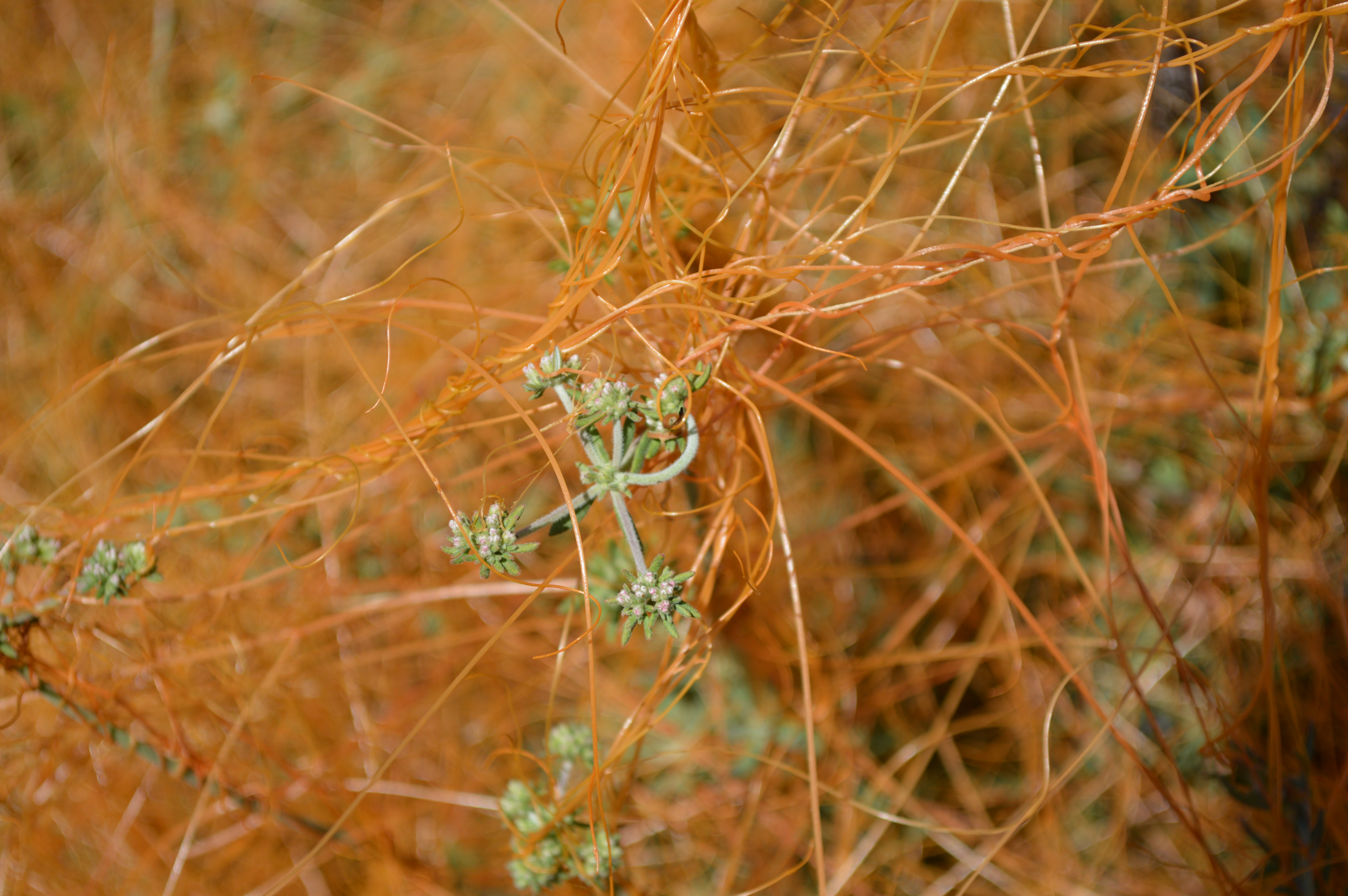
Parasitism/disease
Cuscuta parasitizes native plants
Photo Credit: Emily Perkins, SDMMP
|
Cactus Fungal Pathogen (Alternaria sp.)
This page provides information on the cactus dieback that was recently (2021) discovered on cactus (Opuntia littoralis) at a nursery in San Pasqual Valley and one restoration site sourced with the nursery cactus in Bandy Canyon. Recent findings from the Department of Plant Pathology, UC Davis pathogenicity tests show that the most frequent fungal species on the diseased cactus are a variety of Alternaria species. The plant pathology lab will next conduct greenhouse experiments to evaluate the effect of environmental factors such as humidity and water availability on disease severity. Information from this study will be used to develop best management practices for land mangers.
|
|
Rabbit Hemorrhagic Disease (RHDV2)
Rabbit hemorrhagic disease (RHDV2) was detected in Palm Springs in March 2020 and Ramona in April 2021. It is highly contagious and often lethal to wild and domestic rabbits, hares, and pikas. Infected rabbits may or may not exhibit symptoms leading up to their death. Symptoms are rabbits may suffer are fever, swelling, inappetence, lethargy, spasms, breathing difficulties, blue colored lips or mucous membranes, bleeding from body cavities, and liver necrosis. The disease is transmitted to rabbits through contact with other infected rabbits or carcasses, their meat or their fur, contaminated food or water, or materials coming into contact with them. The virus can persist in the environment for a very long time, making disease control efforts extremely challenging once in wild rabbit populations.
|
|
SDMMP Summary of Achievements 2008-2024
As a program, SDMMP has regionally monitored 52 species and regionally surveyed 68 species across all taxa; monitored and/or mapped 8 vegetation communities; and modeled, assessed, and mapped 8 threats and stressors. Additionally, the SDMMP has completed 27 genetic studies, 80 research studies, 18 habitat models, and interacted with more than 75 partner groups. The table provided breaks down management and monitoring tasks that have been completed by species, vegetation community, and threats.
|
|
Southwestern Willow Flycatcher Brown-headed Cowbird Demographic Monitoring
This study expands on the efforts started in 2015 in documenting the status of Southwestern Willow Flycatchers in San Diego County, California. It specifically evaluates the level of parasitism from the Brown-headed Cowbird on flycatcher populations at Lake Henshaw on collecting data on nest success, productivity, and parasitism rate.
|